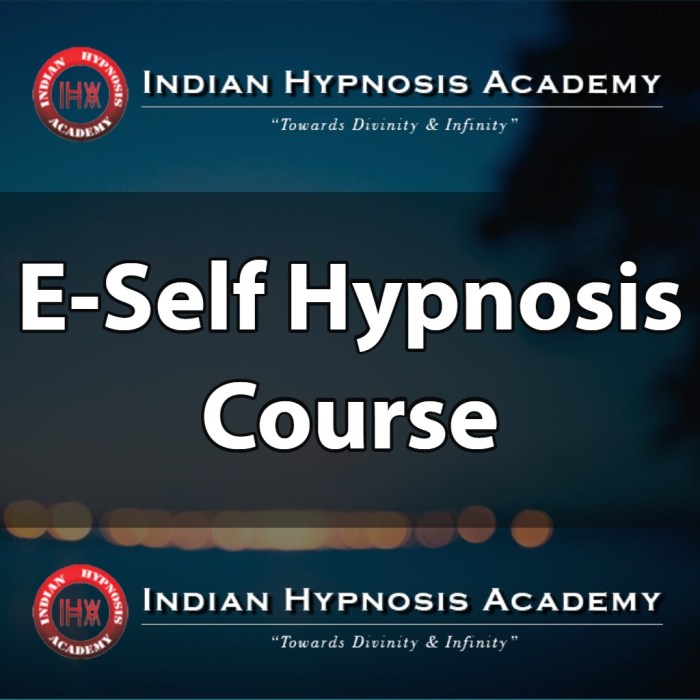
Welcome to the whimsical world of self hypnosis training, where your mind becomes the magical wand and your subconscious is the enchanted realm ready for exploration! Picture this: you, sitting comfortably, diving deep into your thoughts, armed with techniques that can turn your brain into a powerhouse of positivity and wellness. It’s not just about snoozing your way to success; it’s a playful dance with your inner self that promises to enhance your mental and emotional health!
As we unravel the secrets behind self hypnosis, we’ll navigate through various techniques that transform your mind into a playground of personal development. From crafting healthier eating habits to managing pesky cravings, and even alleviating chronic pain, this journey promises benefits that resonate not just on the surface but deep within your psyche.
Self Hypnosis Basics
Imagine a world where you can flip the switch on your mind, turning negative thoughts into empowering beliefs faster than you can say “abracadabra.” Self-hypnosis is the magic wand of personal development, allowing individuals to dive deep into their subconscious minds to effect positive change. This powerful tool is not just for stage performers; it’s for anyone looking to improve their mental and emotional well-being.
By tapping into this incredible ability, you can enhance your focus, reduce stress, and even boost your confidence—all while sitting comfortably in your favorite chair, possibly with a cup of tea in hand.Self-hypnosis involves entering a state of focused attention and heightened suggestibility, where the subconscious is more receptive to change. Think of it as getting your mind’s “software” updated without the annoying pop-up ads.
Techniques range from visualization to progressive relaxation, effectively guiding your mind into a trance-like state. This practice is a cornerstone of personal development, allowing you to harness the untapped potential of your mind and pave the way for transformative change.
Techniques Used in Self Hypnosis Training
Understanding the various techniques of self-hypnosis is essential for anyone aiming to master this art. Each method serves as a unique pathway into your subconscious, enabling you to explore different areas of your mind. Below are some popular techniques that can help you slip into a state of self-hypnosis faster than you can find your remote control.
- Progressive Muscle Relaxation: This technique involves systematically tensing and relaxing different muscle groups to alleviate stress and prepare your body for hypnosis.
- Visualization: Picture yourself in a serene setting, like a beach or a forest, to calm your mind and open the door to your subconscious.
- Affirmations: Repeating positive statements while in a relaxed state can help rewire your brain for success. It’s like giving your mind a pep talk, but without the awkwardness of looking in the mirror.
- Breathing Exercises: Controlled breathing can help you center yourself and promote relaxation, paving the way for deeper hypnosis.
- Self-Suggestions: Crafting specific, positive suggestions to repeat during your self-hypnosis session can help direct your subconscious toward desired outcomes.
Benefits of Self Hypnosis for Mental and Emotional Well-Being
The benefits of self-hypnosis are as myriad as the flavors of ice cream in a parlor. From reducing anxiety to improving sleep quality, the impact on mental and emotional health is profound. Engaging in self-hypnosis not only promotes relaxation but also empowers individuals to take control of their thoughts and feelings.
- Anxiety Reduction: Self-hypnosis can help alleviate anxiety by training the mind to respond differently to stressors. Consider it your personal “chill-out” button.
- Improved Sleep: Regular practice can lead to better sleep patterns, allowing you to travel to Dreamland faster than you can say “counting sheep.”
- Increased Focus and Concentration: By clearing mental clutter, self-hypnosis enhances your ability to concentrate on tasks, making you the ultimate productivity ninja.
- Emotional Healing: Addressing deep-seated emotional issues can lead to profound healing, like cleaning out a closet full of bad memories and making space for new ones.
- Confidence Boost: Using affirmations during hypnosis can bolster self-esteem, helping you strut into any room like you own it.
Self Hypnosis for Health and Nutrition
Welcome to the magical world of self-hypnosis, where your mind is the ultimate weight-loss weapon, and cravings are nothing but pesky little gremlins that can be tamed! Picture this: you, effortlessly slipping into a deep state of relaxation and retraining your brain to embrace healthier choices. Yes, it’s like putting your mind on a diet without having to skip dessert! Let’s dive into how self-hypnosis can be your best friend in the quest for health and nutrition.
Weight Management and Obesity Control
Self-hypnosis is not just about floating in the clouds; it’s about grounding yourself in reality while achieving your weight management goals. By tapping into the power of suggestion, you can program your brain to view food differently and establish a stronger relationship with your body. This technique can be particularly effective in fostering a mindset conducive to weight loss and maintaining a healthy lifestyle.
To understand how it works, consider these key benefits:
-
Heightened motivation: Self-hypnosis can boost your drive to stick to your weight-loss plan, making you feel like a superhero ready to face any challenge.
-
Enhanced self-control: It allows you to develop a level of discipline that makes passing on that extra slice of cake seem effortless.
-
Positive mindset: Hypnotic suggestions can shift your mental framework, enabling you to see food as fuel rather than comfort.
Healthier Eating Habits
When it comes to culinary choices, self-hypnosis can transform you into a culinary connoisseur who craves broccoli over brownies. By using visualization techniques during self-hypnosis, you can imagine yourself savoring healthy meals and enjoying the benefits of nutritious eating. This kind of mental imagery can make healthy foods more appealing than ever. Here’s how to cultivate healthier eating habits:
-
Visualizing your ideal meal: Picture yourself enjoying a colorful plate of veggies and lean proteins, making it hard to resist the lure of fast food.
-
Affirmations: Use positive affirmations such as “I enjoy nourishing my body with healthy foods,” to rewire your brain and make wholesome choices second nature.
-
Mindful eating: During self-hypnosis, practice slowing down your eating pace to truly appreciate flavors and textures, transforming meals into a delightful experience.
Managing Cravings and Emotional Eating
Cravings can strike like a ninja in the night, but with self-hypnosis, you can become your own craving ninja fighter! It’s about using your brain power to tackle those pesky urges that often send us reaching for the cookie jar. Self-hypnosis helps you identify the root causes of emotional eating and reprograms your thought patterns.Here’s the strategy to conquer cravings:
-
Identifying triggers: Use self-hypnosis to uncover what sparks your cravings—stress, boredom, or maybe a particularly riveting episode of your favorite show.
-
Creating a mental toolbox: Equip yourself with healthy alternatives for when cravings strike, like reaching for fruit instead of chips.
-
Visualizing success: Imagine yourself triumphantly overcoming cravings, reinforcing the belief that you have control over your choices.
Self Hypnosis in Pain Management and Therapy

Imagine being able to transport yourself to a serene, pain-free zone simply by harnessing the power of your own mind. Welcome to the whimsical world of self-hypnosis and its incredible potential for pain management! This magical practice allows individuals to tap into the subconscious, offering a powerful tool to alleviate pain and enhance overall well-being. With a sprinkle of creativity and a dash of humor, let’s unravel how self-hypnosis can become your trusty sidekick in the battle against discomfort.Incorporating self-hypnosis into pain management strategies involves a blend of mental techniques and therapeutic practices.
By focusing on relaxation and visualization, individuals can create a personal oasis where pain dissipates like cotton candy in a rainstorm. Studies have shown that self-hypnosis can significantly reduce the perception of pain, making it an invaluable ally in both acute and chronic situations. It’s like having an imaginary remote control – you just press the “mute” button on pain!
Procedures for Using Self Hypnosis in Physical Therapy Settings
When it comes to physical therapy, self-hypnosis can be integrated into treatment plans to enhance the healing process. Here are the key steps to successfully implement this technique in a therapeutic environment:
1. Preparation Stage
Create a calming atmosphere where patients feel safe and comfortable. Think dim lights, soothing sounds, and perhaps even a plant or two (because who doesn’t love a bit of green?).
2. Induction
Guide the patient into a relaxed state through verbal induction. This may include suggesting deep breaths or visualizing a peaceful beach. (Who wouldn’t want to imagine they’re lounging on a tropical island rather than in physical therapy?).
3. Suggestion Phase
While in this relaxed state, offer positive suggestions related to pain relief. For example, “With each breath, imagine the tension melting away like butter in a hot pan.”
4. Visualization
Encourage patients to visualize their pain reducing or disappearing. They could imagine it as a balloon drifting away into the sky, or like a pesky fly getting swatted away (goodbye, pain!).
5. Reinforcement
After the session, reinforce the positive outcomes by encouraging patients to practice self-hypnosis regularly at home. Providing them with scripts or recordings can make this part easier to follow.
6. Follow-up
Monitor the effectiveness of self-hypnosis by discussing improvements in pain levels and overall recovery. Make sure to celebrate each little victory—after all, every step forward deserves a mini dance party!
The combination of self-hypnosis and physical therapy can create a powerful synergy that promotes healing and pain relief.
Self-hypnosis has been shown to be remarkably effective in alleviating chronic pain and stress-related conditions. Research indicates that patients who practice self-hypnosis experience a notable reduction in pain levels, leading to improved functionality and quality of life. This technique can be particularly helpful for conditions such as fibromyalgia, arthritis, and migraines. For instance, a study involving individuals with chronic back pain revealed that those who incorporated self-hypnosis into their treatment reported a 40% decrease in pain intensity.
Additionally, participants noted lower levels of anxiety and improved emotional health. It’s safe to say that self-hypnosis can turn the pain management process from a daunting task into a more enjoyable journey, one where laughter and relaxation reign supreme!In summary, self-hypnosis offers a unique and empowering option for pain management and therapy. By harnessing the imaginative power of the mind, individuals can experience significant relief and improve their overall health.
So, the next time pain tries to rain on your parade, just remember: with self-hypnosis, you can create your own sunshine!
Final Thoughts

So there you have it! Self hypnosis training isn’t just a quirky party trick; it’s a treasure map leading you to a healthier, happier version of yourself. With every technique learned and every session practiced, you’re not just hypnotizing yourself – you’re turning the spotlight on the wonderful potential lying dormant in your mind. Grab your metaphorical magic wand, and let’s make some enchanting changes in your life!
Frequently Asked Questions
How long does it take to see results from self hypnosis?
Results can vary, but many begin to notice changes within a few sessions. Consistency is key, so stick with it!
Is self hypnosis safe for everyone?
Generally, yes! However, if you have severe mental health issues, it’s best to consult a professional first.
Can I hypnotize myself without any prior experience?
Absolutely! Self hypnosis training is designed for beginners, guiding you every step of the way.
Are there any risks involved with self hypnosis?
When practiced correctly, self hypnosis is quite safe. Just avoid using it as a substitute for medical treatment when necessary.
What if I can’t get into a deep state of hypnosis?
Don’t fret! It takes practice. Just relax, keep trying, and let your mind wander – you’ll get there!





